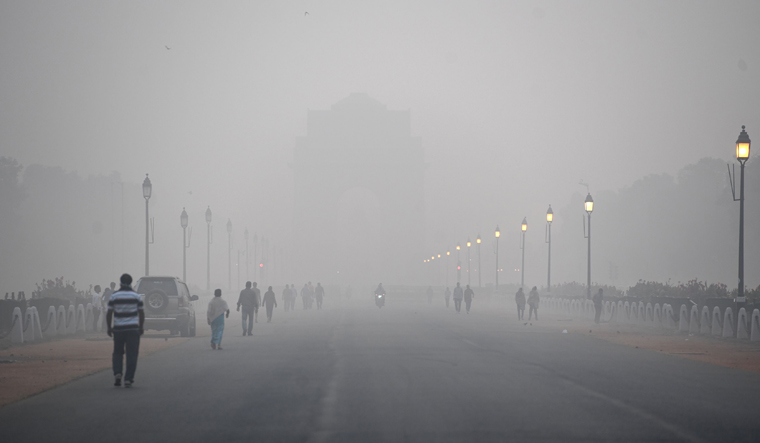Even as Delhi was enveloped in a thick blanket of smog from the morning of Christmas day, the city airport authorities said flight movement was not normally affected, except for aircraft which did not have equipment for low-visibility operations.
Meanwhile, Delhi’s air quality improved slightly to the very poor category after remaining in the severe zone for three days amid weak winds that trapped local emissions. The day temperature was expected to remain five degrees above normal on Monday.
A 24-hr-average Air Quality Index (AQI) of 393 (very poor) was recorded 9.05am on Monday compared to 411 at 4pm on Sunday, 450 on Saturday, and 409 on Friday. The AQI was likely to improve further but stay in the very poor category until Tuesday. The air quality was likely to deteriorate again on Wednesday due to unfavourable meteorological conditions.
The air quality deteriorates to a severe zone in the first half of November mostly due to farm stubble fires, the second half of December, and mid-January largely because of local sources of pollution such as vehicular and industrial emissions worsened by nearly still winds and dipping temperatures.
The predominant surface wind was likely to be from the northwest with a speed of up to four km per hour with mainly clear sky and moderate to dense fog.
The city recorded a minimum temperature of 7.8°C. It was expected to hover between 7-9°C throughout the week with dense fog in the morning. The mercury was expected to go up to 25°C. On Sunday, the maximum temperature of 25.9°C was five degrees above normal.
Smog plunged the visibility at Safdarjung to 200m in the morning and 300m at 7pm on Sunday as the mercury dipped to 7.6°C compared to 9.6°C the previous day.
The clear skies trapped heat during the day, pushing the maximum temperature up to 25.9°C, the highest day-time mercury this month. Clear skies allow sunlight during the day. In the absence of any clouds at night, the heat given out by the surface is lost quickly, and night-time temperature plummets.













